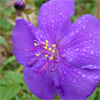Introduction

Moving on!
Dear Lyonia readers,
This will be my last issue of Lyonia to publish. After three years as Editor-in-Chief of Lyonia it is time for me to move on to new tasks.
In the last three years, Lyonia changed from an infrequently published in-house journal, to an internationally recognized online journal with multiple issues per year.
The quality of manuscripts submitted to Lyonia is excellent. Lyonia's focus on tropical ecology and sustainable development attracts a large number of contributions. The journal is read especially widely in the tropical countries of our world, with the highest percentage of its readers coming from Latin America.
There is always room for improvement however, and I hope that Lyonia is going to become even better under its new Editor-in-Chief. For now, Dr. Cliff Morden, Interim Director of Lyon Arboretum, will take over this position.
I wish to thank all members of the Editorial Board, all reviewers, and of course, all contributers, who have helped to make Lyonia a successful online journal in a very short time.
Regards,
Rainer Bussmann







